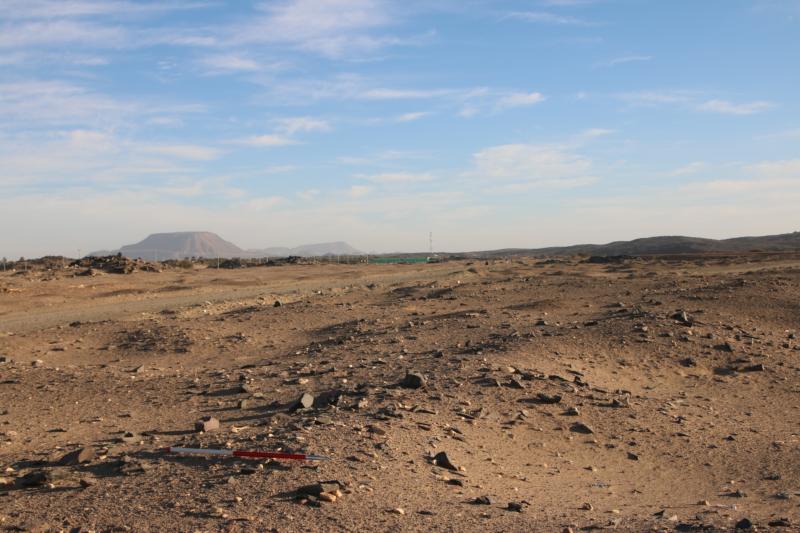Just one last visit to Abri and to WLAN, before it goes back to Khartoum! Has been a great first short season of the MUAFS project with plenty of intriguing data and impressions!
We documented many impressive sites in the last two weeks – altogether, I managed to re-identify and check 119 sites, which Vila recorded in the 1970s. For some of these sites, the dating is of much interest. A slightly revised dating as compared to the published data adds fresh information about several periods of presence in this part of the Nile valley, for example during the Napatan period.
Of prime interest this week was the Kerma period and here in particular settlement sites and cemeteries. Various large tumuli cemeteries, especially of the Kerma Moyen and Kerma Classique periods, are located at the East Bank; we found several older and smaller ones on the West Bank.
Ginis East was once again of particular importance and two more sites were investigated by magnetometry this season. GiE 003, labelled by Vila as 2-T-39, is a huge tumulus cemetery comprising probably more than 150 tombs, stretching from East to West and now partly destroyed by modern pathways and streets. A similar site is 2-P-7, located further upstream at Kosha East. There, the tumuli are quite dismantled, but various ceramics including Egyptian imports can still be found and suggest a Kerma Moyen date as prime phase of use for this cemetery.

Marion’s work with the Ferrex Foerster magnetometer revealed amazing results at GiE 004, a Kerma settlement documented by Vila as site 2-T-5. The main structure of the site and its multiple circular huts, possible enclosures for animals and fences are clearly visible on the magnetogramm. The site is surrounded by later structures from Post-Meroitic and Christian times – like at other places in our concession, a long-lasting multi-period use of this part of Ginis East is obvious.
Finally, intriguing Kerma sites can be found at Attab West – in the immediate surroundings of 18th Dynasty sites, comprising both mudbrick and stone architecture. These sites, which are located along an ancient branch of the Nile, are especially relevant to investigate cultural encounters during the Bronze Age in our concession area since Egyptian pottery was found frequently associated with Kerma Classique ceramics.

So many exciting new finds, so much work to do in the near future between Attab and Ferka!
